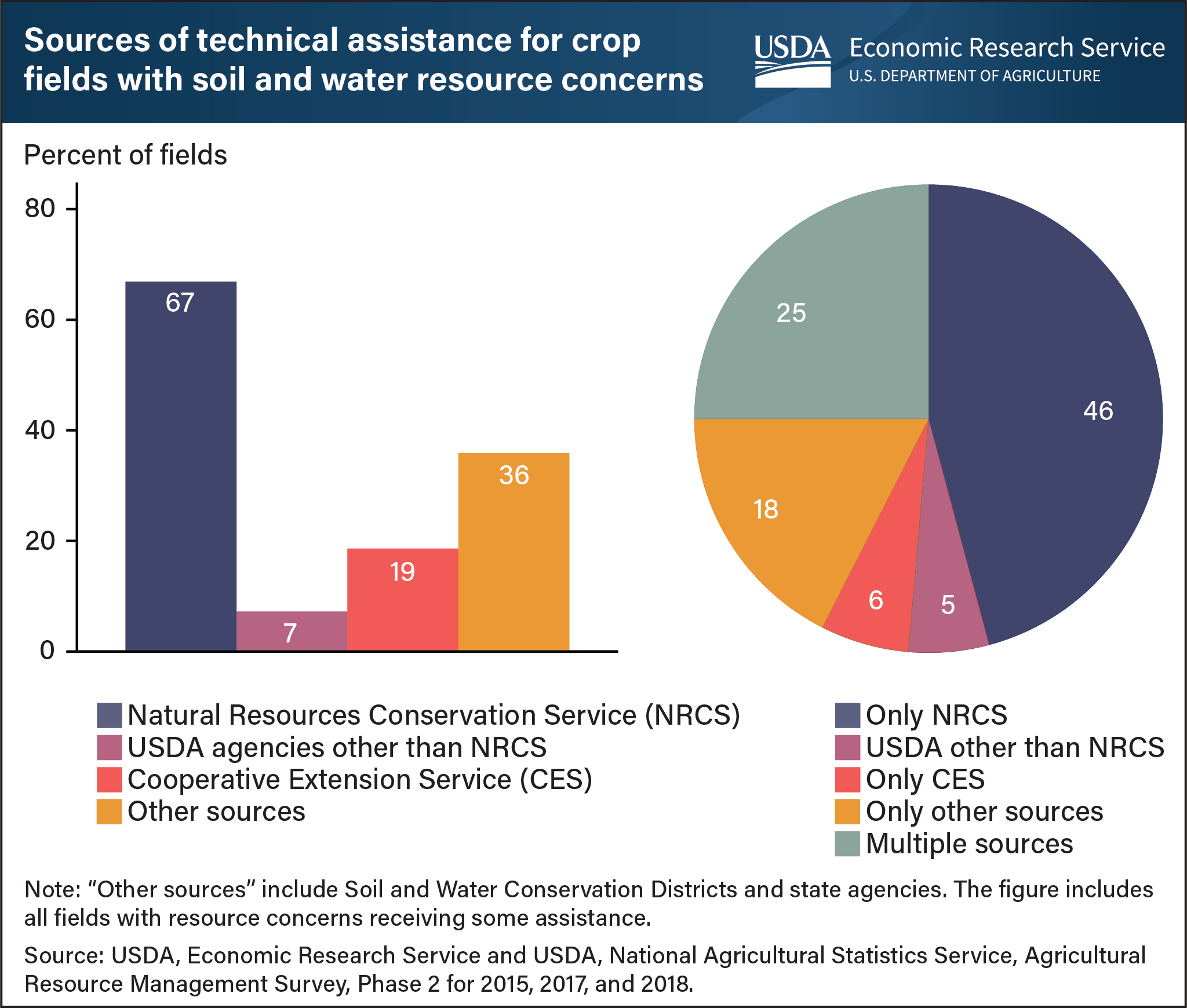USDA’s NRCS is the most common source of technical assistance for crop fields with self-reported soil and water related resource concerns
- by Andrew B. Rosenberg and Steven Wallander
- 6/1/2022

USDA asked farmers to self-report soil and water related resource concerns on their cotton, wheat, oat, and soybean fields for USDA’s 2015, 2017, and 2018 Agricultural Resource Management Survey (ARMS). USDA also asked farmers to report any sources of technical assistance which helped address their on-field soil and water concerns. USDA’s Natural Resources Conservation Service (NRCS) defines a resource concern as an expected degradation of a natural resource used in farming to the degree that its sustainability or intended use is impaired. NRCS provides free technical assistance both as a standalone service under the Conservation Technical Assistance program (CTA) and to support implementation of practices receiving financial assistance from programs such as the Environmental Quality Incentives Program (EQIP). Producers can also seek technical assistance from other USDA agencies, the Cooperative Extension System, or sources such as conservation districts or State agencies. According to recent ARMS data, about 67 percent of fields that received any technical assistance received it from NRCS, with 46 percent of assisted fields receiving assistance exclusively from NRCS. Twenty five percent of assisted fields received assistance from multiple sources. This chart was drawn from the USDA, Economic Research Service report USDA Conservation Technical Assistance and Within-Field Resource Concerns, published May 5, 2022.


